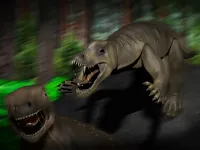(Press-News.org) The universe was created by a giant bang; the Big Bang 13.8 billion years ago, and then it started to expand. The expansion is ongoing: it is still being stretched out in all directions like a balloon being inflated.
Physicists agree on this much, but something is wrong. Measuring the expansion rate of the universe in different ways leads to different results.
So, is something wrong with the methods of measurement? Or is something going on in the universe that physicists have not yet discovered and therefore have not taken into account?
It could very well be the latter, according to several physicists, i.a. Martin S. Sloth, Professor of Cosmology at University of Southern Denmark (SDU).
In a new scientific article, he and his SDU colleague, postdoc Florian Niedermannn, propose the existence of a new type of dark energy in the universe. If you include it in the various calculations of the expansion of the universe, the results will be more alike.
- A new type of dark energy can solve the problem of the conflicting calculations, says Martin S. Sloth.
Conflicting measurements
When physicists calculate the expansion rate of the universe, they base the calculation on the assumption that the universe is made up of dark energy, dark matter and ordinary matter. Until recently, all types of observations fitted in with such a model of the universe's composition of matter and energy, but this is no longer the case.
Conflicting results arise when looking at the latest data from measurements of supernovae and the cosmic microwave background radiation; the two methods quite simply lead to different results for the expansion rate.
- In our model, we find that if there was a new type of extra dark energy in the early universe, it would explain both the background radiation and the supernova measurements simultaneously and without contradiction, says Martin S. Sloth.
From one phase to another
- We believe that in the early universe, dark energy existed in a different phase. You can compare it to when water is cooled and it undergoes a phase transition to ice with a lower density, he explains and continues:
- In the same way, dark energy in our model undergoes a transition to a new phase with a lower energy density, thereby changing the effect of the dark energy on the expansion of the universe.
According to Sloth and Niedermann's calculations, the results add up if you imagine that dark energy thus underwent a phase transition triggered by the expansion of the universe.
A very violent process
- It is a phase transition where many bubbles of the new phase suddenly appear, and when these bubbles expand and collide, the phase transition is complete. On a cosmic scale, it is a very violent quantum mechanical process, explains Martin S. Sloth.
Today we know approx. 20 per cent of the matter that the universe is made of. It is the matter that you and I, planets and galaxies are made of. The universe also consists of dark matter, which no one knows what is.
In addition, there is dark energy in the universe; it is the energy that causes the universe to expand, and it makes up approx. 70 pct. of the energy density of the universe.
INFORMATION:
A new software tool allows researchers to quickly query datasets generated from single-cell sequencing. Users can identify which cell types any combination of genes are active in. Published in Nature Methods on 1st March, the open-access 'scfind' software enables swift analysis of multiple datasets containing millions of cells by a wide range of users, on a standard computer.
Processing times for such datasets are just a few seconds, saving time and computing costs. The tool, developed by researchers at the Wellcome Sanger Institute, can be used much like a search engine, as users can input free text as well as gene names.
Techniques to sequence the genetic material from an individual cell have advanced ...
Information is encoded in data. This is true for most aspects of modern everyday life, but it is also true in most branches of contemporary physics, and extracting useful and meaningful information from very large data sets is a key mission for many physicists.
In statistical mechanics, large data sets are daily business. A classic example is the partition function, a complex mathematical object that describes physical systems at equilibrium. This mathematical object can be seen as made up by many points, each describing a degree of freedom of a physical system, that is, the minimum number of data that can describe all of its properties.
An ...
CAMBRIDGE, MA -- Boron, a metalloid element that sits next to carbon in the periodic table, has many traits that make it potentially useful as a drug component. Nonetheless, only five FDA-approved drugs contain boron, largely because molecules that contain boron are unstable in the presence of molecular oxygen.
MIT chemists have now designed a boron-containing chemical group that is 10,000 times more stable than its predecessors. This could make it possible to incorporate boron into drugs and potentially improve the drugs' ability to bind their targets, the researchers say.
"It's an entity ...
Judging by its massive, bone-crushing teeth, gigantic skull and powerful jaw, there is no doubt that the Anteosaurus, a premammalian reptile that roamed the African continent 265 to 260 million years ago - during a period known as the middle Permian - was a ferocious carnivore.
However, while it was previously thought that this beast of a creature - that grew to about the size of an adult hippo or rhino, and featuring a thick crocodilian tail - was too heavy and sluggish to be an effective hunter, a new study has shown that the Anteosaurus would have been able to outrun, track down and kill its prey effectively.
Despite its name and fierce appearance, ...
When the Eyjafjallajökull volcano in Iceland erupted in April 2010, air traffic was interrupted for six days and then disrupted until May. Until then, models from the nine Volcanic Ash Advisory Centres (VAACs) around the world, which aimed at predicting when the ash cloud interfered with aircraft routes, were based on the tracking of the clouds in the atmosphere. In the wake of this economic disaster for airlines, ash concentration thresholds were introduced in Europe which are used by the airline industry when making decisions on flight restrictions. However, a team of researchers, ...
The planet Mars has no global magnetic field, although scientists believe it did have one at some point in the past. Previous studies suggest that when Mars' global magnetic field was present, it was approximately the same strength as Earth's current field. Surprisingly, instruments from past Mars missions, both orbiters and landers, have spotted patches on the planet's surface that are strongly magnetized--a property that could not have been produced by a magnetic field similar to Earth's, assuming the rocks on both planets are similar.
Ahmed AlHantoobi, an intern working with Northern Arizona University planetary scientists, assistant professor Christopher Edwards and postdoctoral ...
PITTSBURGH, March 3, 2021 - Women who experience an accelerated accumulation of abdominal fat during menopause are at greater risk of heart disease, even if their weight stays steady, according to a University of Pittsburgh Graduate School of Public Health-led analysis published today in the journal Menopause.
The study--based on a quarter century of data collected on hundreds of women--suggests that measuring waist circumference during preventive health care appointments for midlife women could be an early indicator of heart disease risk beyond the widely used body mass index (BMI)--which is a calculation of weight vs. height.
"We need to shift gears on how we think about heart disease risk in women, particularly as they approach and go through menopause," said senior ...
A review of nearly 28,000 emergency department records shows less than 2% of patients diagnosed with COVID-19 suffered an ischemic stroke but those who did had an increased risk of requiring long-term care after hospital discharge. Those are the findings from a study conducted by researchers from the University of Missouri School of Medicine and MU Health Care.
The researchers teamed up with the MU Institute for Data Science and Informatics and the Tiger Institute for Health Innovation to review data from 54 health care facilities. They found 103 patients (1.3%) developed ischemic stroke among 8,163 patients with COVID-19. ...
PHILADELPHIA (March 3, 2021) - According to a new study published in Medical Care, improving hospital nurse staffing as proposed in pending legislation in New York state would likely save lives. The cost of improving nurse staffing would be offset by savings achieved by reducing hospital readmissions and length of hospital stays.
Researchers at the Center for Health Outcomes and Policy Research (CHOPR) at the University of Pennsylvania School of Nursing, conducted independent research in early 2020 on whether pending nurse staffing legislation in New York state is in the public's interest. The study of 116 hospitals and 418,000 Medicare patients documented large differences in patient-to-nurse ratios by hospital from an average of 4.3 patients for each nurse to as many ...
SALT LAKE CITY - Utah researchers report significant new insights into the development of blood cancers. In work published today in Blood Cancer Discovery, a journal of the American Association for Cancer Research, scientists describe an analysis of published data from more than 7,000 patients diagnosed with leukemia and other blood disorders. Their findings provide new clues about mutations that may initiate cancer development and those that may help cancer to progress.
The researchers sought to identify mutation hotspots, or frequent changes ...




